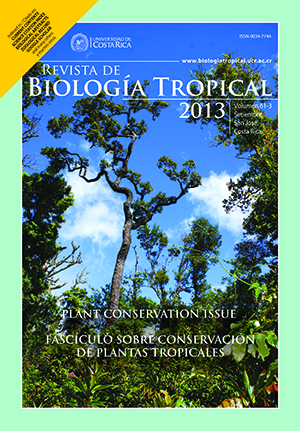Resumen
Los estudios sobre aspectos reproductivos son escasos en Equisetum. Por eso, hemos realizado un análisis detallado del proceso de esporogénesis, desarrollo de las esporas, ultraestructura de procesos que tienen lugar durante la meiosis, formación de la pared esporal, orbículas y eláteres de E. bogotense, en especímenes procedentes del Cauca, Colombia. Los estudios se efectuaron mediante microscopía fotónica, electrónica de transmisión (TEM) y de barrido (SEM). Los estróbilos llevan numerosos esporangióforos maduros, cada uno con un escutelo peltado, unido al eje del estróbilo por el manubrio y portador de 5-6 esporangios sésiles. Los esporocitos experimentan meiosis dando origen a tétradas de esporas. El tapete pierde la integridad histológica en las primeras etapas de esporogénesis y rodea los esporocitos premeióticos, posteriormente a las tétradas y finalmente las esporas inmaduras, que experimentan cambios citológicos y de tamaño antes de alcanzar la etapa adulta. El esporodermo de las esporas adultas de E. bogotense consiste de seudoendosporio, exosporio y perisporio. Vistos con MEB, el exosporio de las esporas adultas es liso a rugulado con microperforaciones y el perisporio es muriforme, rugado, con pliegues delicados, estrechos, discontinuos, que se distribuyen al azar y delimitan aréolas incompletas. Externamente el perisporio está cubierto por orbículas, que se forman también en la cara externa y los márgenes de los eláteres. Vistos con TEM, el exosporio es una capa de material granular fino y el perisporio, una capa mucho más delgada con orbículas discretas. Los eláteres están formados por dos capas de naturaleza fibrilar, orientadas longitudinalmente y transversalmente. La esporogénesis en E. bogotense es sincrónica, similar a la de E. giganteum, otra especie de distribución tropical que también crece en Colombia.##plugins.facebook.comentarios##
Descargas
Los datos de descargas todavía no están disponibles.


